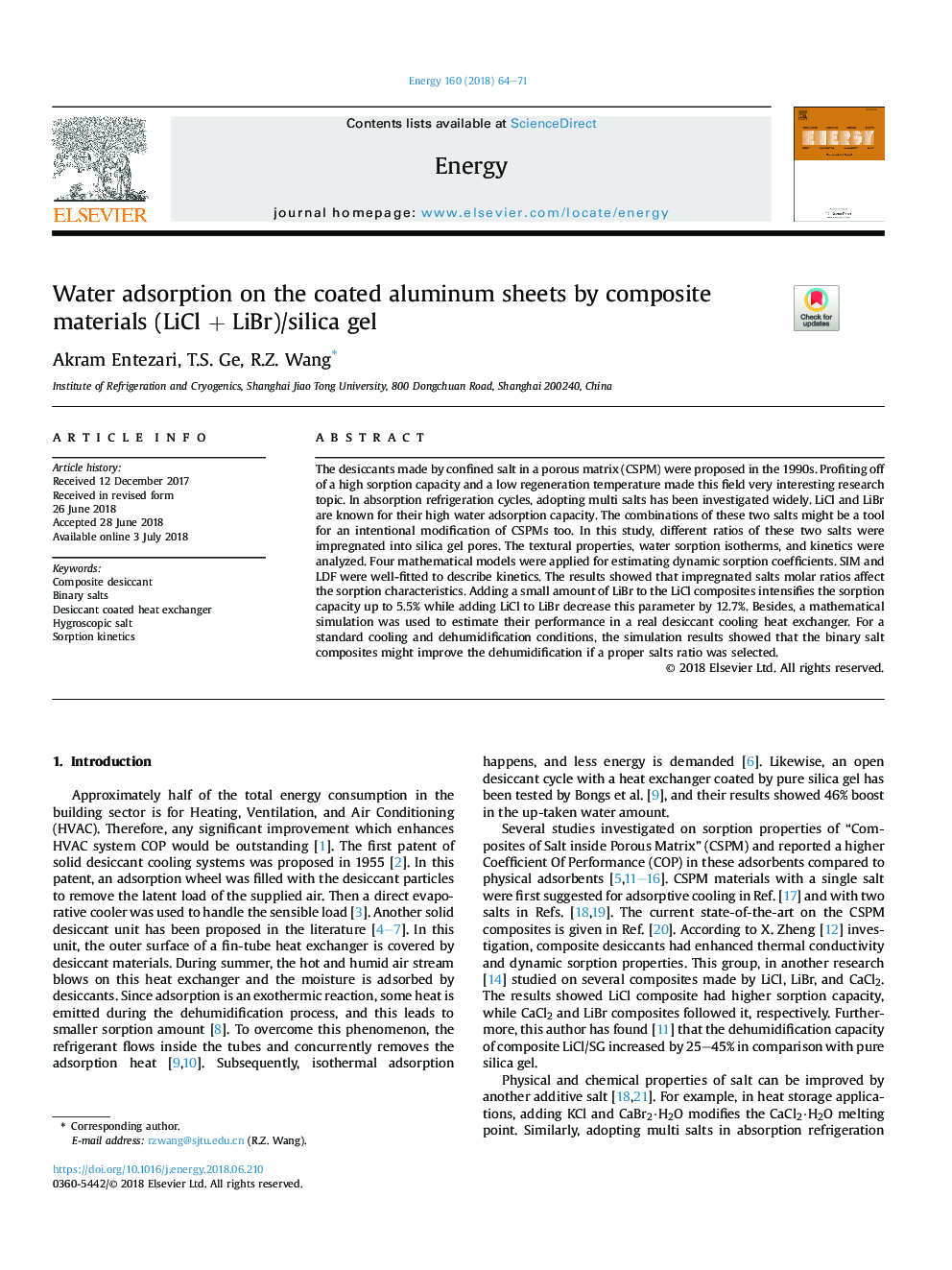| Article ID | Journal | Published Year | Pages | File Type |
|---|---|---|---|---|
| 8070938 | Energy | 2018 | 8 Pages |
Abstract
The desiccants made by confined salt in a porous matrix (CSPM) were proposed in the 1990s. Profiting off of a high sorption capacity and a low regeneration temperature made this field very interesting research topic. In absorption refrigeration cycles, adopting multi salts has been investigated widely. LiCl and LiBr are known for their high water adsorption capacity. The combinations of these two salts might be a tool for an intentional modification of CSPMs too. In this study, different ratios of these two salts were impregnated into silica gel pores. The textural properties, water sorption isotherms, and kinetics were analyzed. Four mathematical models were applied for estimating dynamic sorption coefficients. SIM and LDF were well-fitted to describe kinetics. The results showed that impregnated salts molar ratios affect the sorption characteristics. Adding a small amount of LiBr to the LiCl composites intensifies the sorption capacity up to 5.5% while adding LiCl to LiBr decrease this parameter by 12.7%. Besides, a mathematical simulation was used to estimate their performance in a real desiccant cooling heat exchanger. For a standard cooling and dehumidification conditions, the simulation results showed that the binary salt composites might improve the dehumidification if a proper salts ratio was selected.
Keywords
Related Topics
Physical Sciences and Engineering
Energy
Energy (General)
Authors
Akram Entezari, T.S. Ge, R.Z. Wang,
